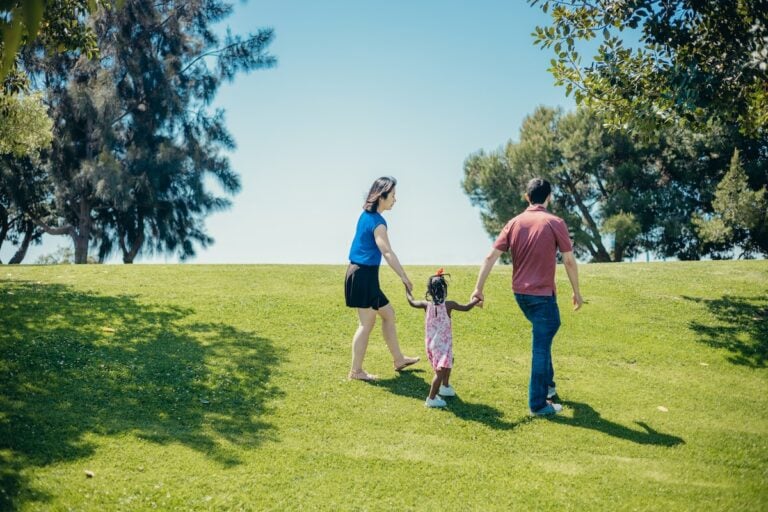
I want to share with you how to adopt or foster a child in Japan.
My wife and I are currently fostering, and are in the final stages of making our foster child a permanent family member, through adoption with Japan’s government. At times it has been a long and stressful process, but we would definitely go through it all again.
Before we get started, fostering or adopting a child through the Japanese government system only works for families living in Japan. So if you are living abroad, and want to adopt from Japan, this information won’t be relevant to you. In that case, you’ll need to contact an international adoption agency. It is not possible to adopt internationally through the Japanese government.
We tried to go down several avenues to adopt in Japan, but I want to specifically explain the government system as we feel that is the easiest and cheapest way to adopt in Japan.
There are two types of adoption in Japan. Regular, and special.
養子縁組, or ‘Regular Adoption’ is unique to Japan, in that it doesn’t sever the child’s ties, rights, and privileges with regard to the birth parent(s). In addition, ‘regular adoptions’ can be dissolved at any time. This type of adoption isn’t available to foreigners, so instead we’ll just focus on what is called ‘Special Adoption’.
特別養子縁組, is the Japanese word for ‘Special Adoption’. This is the legal way for a child to become part of your family. This form of adoption severs all ties with the birth family and you will legally become the parents of your child. Now, under Japanese law, for special adoptions, the child must be under the age of six at the time the adoption petition is filed OR under the age of eight and must have been placed under the continuous care and custody of the prospective adoptive parents since before the child’s sixth birthday.
The step-by-step process (the process is the same for those wishing to foster or adopt):
- Contact the child welfare centre in your area and find the next local adoption and fostering introduction seminar. In Fukuoka, for example, these are held twice a year.
- Attend the introduction, learn more about the process, and speak with parents already fostering and adopting.
- Attend a licensing course. This consists of 2 days of seminars, followed by 2 days of practical training at an orphanage.
- Complete the official application forms.
- Have the government come to your residence for a home study.
- Attend a final interview with your local government’s child welfare office.
- Receive your fostering and adoption license.
- Start the child-matching process.
STEP ONE: Your first step to adopt is to contact your local 児童相談所 ‘Child Welfare Centre’ to find out information on the “Introduction to Foster and Adoptive Parenting Seminar”.
The easiest way to do this is just to do an online search for your city or region, followed by jidousoudansho.

This first seminar only takes a few hours, includes some videos and personal testimonies, and then breaks into groups for some general Q & A with parents who have already adopted and some of the local social workers. It’s a good chance to get some initial information and ask any basic questions you may have.
At the end of this, they will give you dates for the next official training course.
STEP TWO: The official training begins with 2 days of lectures. These tend to be held on weekdays, so you may have to take some time off work. We organised for a private translator, who we paid to sit with us through the lectures, and the trainers were happy for us to do that. For us, at least, they weren’t putt-off at all by our basic Japanese language level, and to make sure we always expressed ourselves correctly, we used our translator for everything we wanted to say.
The training course itself covers the basics of the child welfare system in Japan and the history of adoption and foster care. It then went on to explain various challenges that you may come upon, such as attachment theory, abuse and the effects on the child, how a child may behave when coming into your care, and how to look after them and help them through difficulties. They then share about what support will be available to you from the government. There are also chances to break into groups to talk about scenarios and ask questions.
STEP THREE: After that, it is the practical training. You will do two full days of helping at an orphanage or childcare institution. For us, we did 10 am to 6 pm in an orphanage, helping the care workers look after the babies. We fed, rocked, changed nappies and played with them. At the end of this, the care worker will do an assessment about how you did and then you move on to the next stage.
STEP FOUR: It’s now time for all the paperwork (in Japanese) they will have given you during the lectures. Once you’ve done this, you will have officially applied to foster or adopt.
Included in the paperwork is:
- information about your family and a comprehensive breakdown of your financial situation
- a medical check (you have to pay for this privately at a clinic of your choosing)
- a questionnaire about your intentions to adopt or foster, family history, parenting style and values
- your house plan, a picture of your building, and a picture of your family
Again, our translator helped with all of this.
STEP FIVE: Next comes the home study. Sometime after they’ve received and read through your application, staff from the child welfare office will organise to come and check your house, and interview you a bit more about your reasons for adopting, and your family background and upbringing. We were expecting a more rigorous search of our house for potential hazards, but it was very casual and more of a chat over coffee.
STEP SIX: The final interview. After the home study, they’ll call and invite you for a final interview at the child welfare office. It was mainly a formality, but you’ll meet the head of social services in your area and they’ll ask you a few more questions before signing off on you as foster or adoptive parents.
STEP SEVEN: Receive your license and start the matching process! We applied to be both foster and adoptive parents, so we received separate licenses for both. Then you’ll work with a case worker to get matched with a child. From our first day of training to bringing our new son home, it took just over two years (our case was quite unique for a number of reasons. If you’d like to know more, please reach out to me in private).
So that’s the steps to government adoption in adoption.
For us, the Fukuoka City jidousoudansho was very welcoming, but that may not be the case all over Japan. There may be many differences depending on your situation such as visa length, location in japan, how long you intend to stay in Japan and your language level. We get the impression each area in Japan can be very different in its openness to foreigners. For us in Fukuoka, the government were very open and welcoming. They had placed children before in families with one foreign parent but never had they met a foreign couple wishing to adopt in Japan, so it was a unique experience for everyone involved.
If you have any questions about fostering or adopting in Japan, my wife and I would be extremely happy to help, so please feel free to reach out to us, either by leaving a comment on this blog post or via our YouTube channel, JesseJamesJapan.














